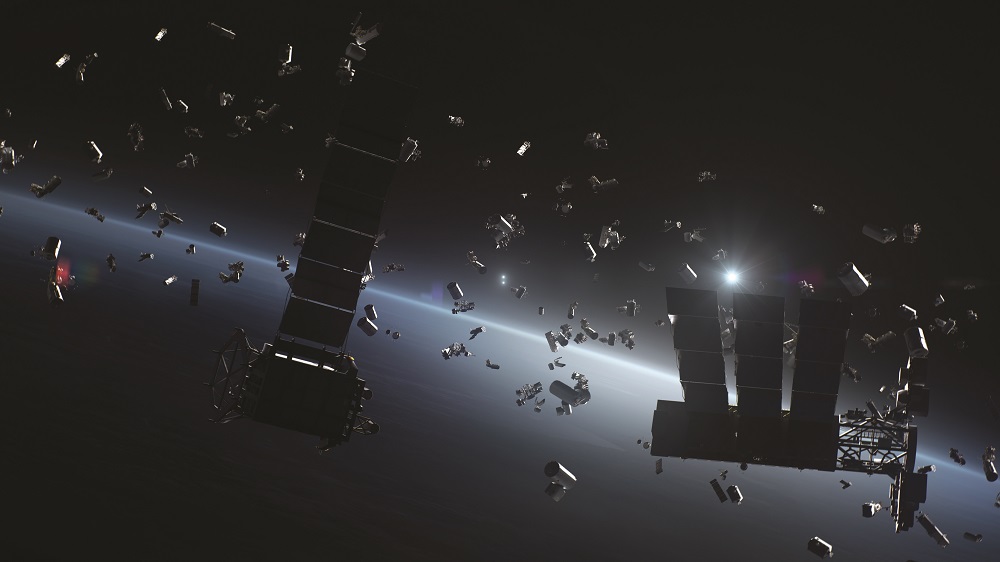Investors are funding orbital solutions for tracking space objects
Keeping close tabs on satellites and their increasingly crowded orbits requires exquisite spatial data that multiple startups say can only be gained from space.
At least eight early-stage companies in North America, Europe, and Australia have secured funds for space-based systems they say will be needed to provide more accurate, complete and reliable information about objects in space.
Some of these startups are chasing anticipated demand for guiding on-orbit servicers. Others see more potential in providing intricately detailed maps and trajectories of satellites, rocket stages and other objects across the near-space landscape.
Some envisage deploying hundreds of dedicated space situational awareness (SSA) satellites, whereas others opt to deploy their sensors on third-party spacecraft.
But while these early-stage ventures offer different solutions for improved SSA, they all believe the ground-based telescopes and radar currently used to keep tabs on-orbit will need an in-space assist to meet future demand.
Orbital SSA advocates say the tens of thousands of satellites bound for low Earth orbit (LEO) over the next decade will strain existing ground capabilities. Debris-causing events in LEO, such as November’s Russian anti-satellite weapon test, also compound the issue.
MAPPING SPACE
The U.S. Department of Defense’s ground-based Space Surveillance Network undergirds one of the most comprehensive catalogs of orbital observations. DoD’s publicly accessible Space-Track.org database provides information about objects that are 10 centimeters or larger, and employs statistical models to infer the population of smaller objects. This means only 4% of current objects in LEO are detected, said Julien Cantegreil, CEO of French satellite-based SSA startup SpaceAble.
Rapidly expanding LEO constellations like Starlink and OneWeb will “make it more difficult and costly” for terrestrial networks to pinpoint space objects and predict conjunctions, he says.
The U.S. space catalog’s use of statistical models that only provide information on the localization and trajectories of objects also misses a “wide range of other data,” which Cantegreil says is “crucial in the conduct of space activities.”
This includes dynamic radiation, energetic atomic particles and tiny particulates such as micrometeoroids and orbital debris.
Operating in the vacuum of space nearer to the action and free from atmospheric distortion, sensors on satellites, orbital SSA advocates say, would be able to monitor and track much smaller objects than what can currently be seen from the ground.
Even objects smaller than 10 centimeters can have the energy in orbit to cause unrepairable damage if they collide with satellites or other spacecraft.
And while Cantegreil says the U.S. government provides the highest quality SSA information, he said the data is filtered by the Department of Defense before transmission.
“Many spatial data users have raised concerns regarding the inability to verify the information provided and criticized the lack of transparency and standards related to the exact process by which the U.S. government provides information on an object’s location and processes collision assessment or warning,” Cantegreil said.
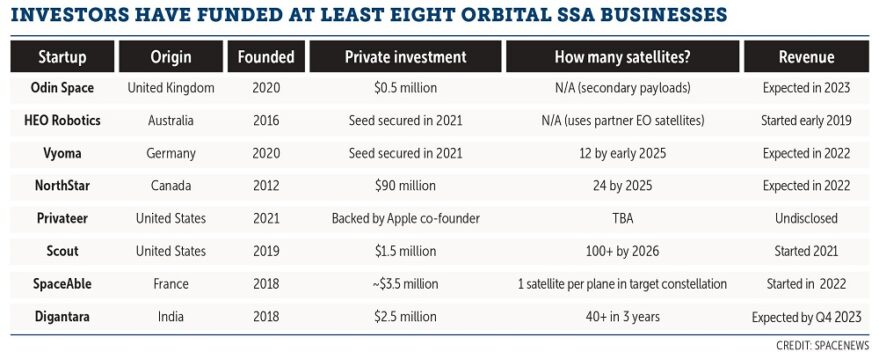
GROUND IMPROVEMENTS
SSA provider LeoLabs, a seven-year-old company based in Menlo Park, California, has been busy expanding its worldwide network of radars to improve LEO monitoring capabilities from the ground.
Dan Ceperley, LeoLabs founder and CEO, said the company has surpassed the U.S. government over the past year in the overall volume of daily measurements collected.
This summer, Ceperley said LeoLabs will also be able to start cataloging objects smaller than 10 centimeters for the first time.
LeoLabs serves its customers — including operators accounting for around two-thirds of the satellites currently in LEO — by providing alerts when potential conjunctions are detected and assessing planned maneuvers to ensure they do not lead to a collision.
Its growing network of ground-based radars also track rocket launches and the atmospheric reentry of rocket stages and satellites. LeoLabs currently has radars in Texas, Alaska, Costa Rica, and New Zealand with new sites under development in Western Australia and the Azores.
“For our mission at LeoLabs, which is to track and catalog hundreds of thousands of objects in LEO multiple times per day every day, we utilize ground-based, phased-array radar systems because they are by far the best choice for this effort,” Ceperley said via email.
He added: “You simply can’t match the power, reliability, and performance of these systems which operate around the clock 24/7/365 through any weather and lighting conditions, and have multi-decade operational lifetimes that will vastly exceed that of satellites performing the same missions.
“With ground-based systems, we can also service, repair, and upgrade our equipment over time, and at a vastly lower cost than space-based systems.
“Plus, you eliminate the cost and complexity of having to launch to space, and there’s always a non-zero chance that any satellite — even one designed to do SSA — can itself get hit by a piece of space debris and cause more damage to the surrounding environment.”
Relative to the U.S. government’s Space Surveillance Network, Ceperley says LeoLabs offers more transparency and shows “all of our work” to foster trust and cooperation.
While a ground site is fixed and far from objects in orbit compared with space-based systems, he said this is ultimately a positive for sites that can sit still while objects in LEO precess them.
Ground systems have access to more power than those in space, he says, and also benefit from comparatively “massive computational and communications capabilities” that make them significantly more efficient than orbital assets.
EXPANDING SSA MARKET
Paris-based Euroconsult forecasts the commercial SSA market — combining space and terrestrial systems — will grow from $82 million in 2022 to about $1.4 billion over the next 10 years.
Maxime Puteaux, a Euroconsult principal advisor, said the research and consulting firm does not yet break down this forecast into ground and space-based revenues, but sees demand growing for both.
Although the SSA market is still in its infancy with low solution uptake and early-stage levels of technology, Puteaux sees “dramatic” sensor hardware and software improvements in the coming years that will increase performance and lower costs.
More satellites in orbit and several debris-causing events in LEO are driving the need for SSA services, he said, and geopolitical tensions are also increasing demand for tracking objects in GEO.
MEET THE IN-SPACE SSA STARTUPS
NorthStar Earth & Space
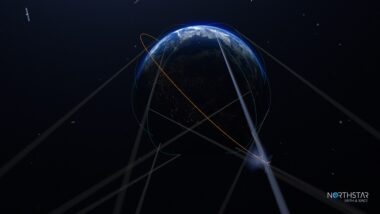
Canada’s NorthStar Earth & Space is by far the best-funded of the bunch after raising more than $90 million to date.
NorthStar announced March 16 it had hired LEO satellite operator Spire to develop three SSA-sensor-equipped 12-unit cubesats for a launch in 2023.
The Canadian company had previously ordered three larger SSA satellites from Thales Alenia Space, which is working in cooperation with LeoStella. Those satellites were originally slated to launch in 2022, but NorthStar spokesperson Jean-Philippe Arseneau said they are now targeting the second quarter of 2023.
NorthStar aims to deploy a full constellation of 24 satellites, which Arseneau says will work with third-party ground systems to enable “simultaneous monitoring of all near-Earth orbits,” including highly elliptical orbit (HEO).
He says the constellation will be able to track objects down to five centimeters in LEO, to 10 centimeters in medium Earth orbit (MEO) and 40 centimeters in geostationary orbit (GEO). The minimum object size for HEO depends on its altitude when it is observed, and will in general vary between 10-40 centimeters.
Satellite operator SES is working with NorthStar to develop data products to support its fleet of satellites in MEO and GEO. SES said this spring it plans to use NorthStar’s SSA data as part of its commitments to space sustainability.
NorthStar plans to set up European headquarters in Luxembourg, where SES is based, after the country’s government-backed venture capital fund joined a $45 million investment round.
The Canadian company also has plans for 40 follow-on spacecraft with infrared and hyperspectral sensors that will focus on monitoring Earth, giving NorthStar another revenue stream besides SSA. NorthStar secured Canadian government funding last year to develop an airborne hyperspectral sensor system to monitor sensitive marine and coastal environments.
Scout
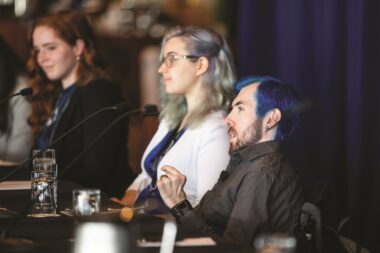
Alexandria, Virginia-based Scout deployed its first and so far only SSA payload to orbit in July 2021 when it launched onboard Tanker-001 Tenzing, Orbit Fab’s satellite refueling demo spacecraft.
The Scout-Vision payload enables Tenzing to passively detect, identify, and model objects it encounters in LEO from as far as two kilometers away.
Eric Ingram, Scout’s CEO and co-founder, said its sensors are designed to “integrate seamlessly” to give other blind spacecraft the ability to observe their surroundings.
He said the company secured its first commercial customer late last year in Momentus, an in-space transportation company that selected Scout to deliver spacecraft vision capabilities for its upcoming missions.
Momentus’ first Vigoride space tug, which launched May 25 on a Falcon 9 rideshare mission, did not carry a Scout-Vision payload.
A Scout-Vision is slated to fly on the next Momentus Vigoride mission, which has not yet confirmed a launch date.
“Companies like [debris removal startup] Astroscale and Momentus are developing and will be providing crucial on-orbit services for the industry and Scout can provide these service providers with much better data and imagery resolutions than the traditional ground-based networks can — because we are space-based,” Ingram said.
Scout also plans to operate its own six-unit cubesats named OVER-Sat (Oversight Visuals and External Reference-Sat) from next year, which will help it build a space object catalog using on-board cameras and AI-based computing. Scout-Vision will be a key subsystem for its first OVER-Sat mission slated in the second quarter of 2023.
“We estimate we’ll have 100+ OVER-Sat systems in operation by 2026, which will provide continuous observation and coverage of low Earth orbit,” Ingram said.
Scout has raised $1.5 million to date, and Ingram said it is in the middle of a seed round that he expects to complete by the third quarter of 2022. In November, Scout won a $50,000 U.S. Air Force contract to demonstrate that data collected in space can improve debris tracking and collision predictions.
High Earth Orbit Robotics
Australia’s High Earth Orbit Robotics is already providing a gallery of objects in orbit that it compiles by commandeering a partner’s Earth-observation satellite when it is not being used, tilting it, and controlling an onboard camera to picture objects it flies past.
HEO Robotics has access to 28 satellites today, according to CEO and co-founder William Crowe.
“From late 2022, we will be launching our own Holmes imaging systems as hosted payloads on spacecraft that wouldn’t otherwise have a camera that meets our requirements,” he said. Examples include communications satellites and orbital transfer vehicles.
“This will allow us to provide coverage where there are no existing Earth observation satellites today, such as high LEO, MEO and GEO,” he said.
He said HEO Robotics has signed “with two suppliers and are in final discussions with several more” to host its sensors.
One of these is Australian startup Space Machines Company, which announced May 18 it had secured an April 2023 launch for its Optimus-1 Orbital Transport Vehicle.
HEO Robotics does not plan to develop its own satellites while there are other options.
Crowe said the startup secured seed funding in 2021 that enabled it to build out its HEO Inspect software suite and services, and the majority of its revenues are currently coming from government customers.
He said its growing database of flyby inspections includes observations such as an object’s external shape, size, orientation, signs of damage, color and what is turned on or off on a satellite.
“We have access to 28 cameras on-orbit today, but believe the number of cameras for ubiquitous coverage of all Earth orbits in 10 years is in the range of 2,500,” he said.
“As humanity extends space-based activities to other physical regimes of space, we’ll extend coverage too.”
Crowe says its inspection service could also spare satellite operators the expense of including barely used sensors on their satellites.
“For example, if an operator has a camera to check deployment of a boom just one time, they should remove that subsystem and the associated engineering complexity and have a flyby inspection instead,” he said.
Digantara
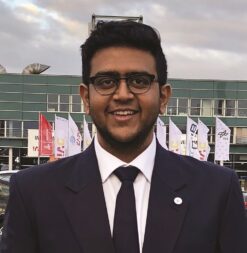
India-based Digantara is planning to deploy at least 40 satellites over the next three years in LEO to track objects as small as a centimeter.
The startup says its use of light detection and ranging (LIDAR) sensors sets it apart from the pack, and will enable it to track objects with greater precision in sunlight and eclipse phases.
Digantara’s LIDAR sensors also aim to provide near-real-time space weather data that, according to business and strategy head Shreyas Mirji, will be important for fine-tuning object trajectory predictions and monitoring a spacecraft’s health.
“We initially sought to address the lack of data for 96 percent of the LEO objects that currently remain untracked,” Mirji said via email. “As we dug deeper into the problem, we realised that there was a lack in Space Weather Data that had direct implications on Space Situational Awareness.”
Digantara also seeks to place sensors on partner satellites for enhanced data collection.
Mirji said the startup has received $2.5 million in seed funding and $150,000 in grants to date. These funds are supporting a technology demonstrator that he said Digantara plans to deploy in the first quarter of 2023, although it has not yet secured a launch contract.
“We are currently working with a handful of agencies and governments on SSA and have on-boarded a beta cohort of commercial space stakeholders including Telespazio, and a megaconstellation operator on building effective SSA data products,” Mirji said.
These stakeholders will get a year of free access to data from Digantara’s demo satellite.
In the future, Digantara plans to extend its presence to MEO and GEO.
“With increased space applications, most spacefaring nations now consider space to be the fourth operational domain, and in order to be self-sufficient, every nation wants to have a strong sovereign capability when it comes to SSA,” he added.
Vyoma

Darmstadt, Germany-based Vyoma is already providing tracking services and data quality assessments to European defense customers through third-party ground-based networks.
However, Vyoma CEO Stefan Frey says even the best-performing telescopes in its network can only observe objects down 5-10 centimeters in size in LEO, and down to around 50-centimeters in GEO.
This can also only be achieved “via dedicated target tracking” of objects in certain positions and under clear atmospheric conditions.
Vyoma is raising a Series A round to fund two pilot microsatellites for a launch toward the end of 2023. Its plans call for another 10 satellites over the following 18 months for a constellation Frey says will work semi-autonomously to catalog objects as small as one centimeter. He said via email the finished system will give Vyoma “the most comprehensive catalogue of man-made space objects, providing the most complete space safety and automation services for” LEO, MEO, and GEO orbits.”
Frey said Vyoma plans to use its satellites to detect near-Earth asteroids and eventually extend its services to include cislunar space, the vast area between the Earth and the moon.
Odin Space
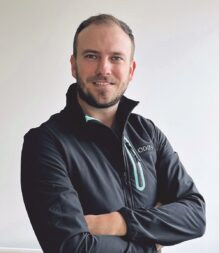
British startup Odin Space is focused on tracking, mapping and characterizing sub-centimeter debris across LEO and GEO. “This size range is too small for current solutions, yet still carries the energy of a bullet,” CEO James New said.
But instead of putting up its own satellites, Odin Space aims to deploy on-orbit detectors called ODIN, or Orbital Debris Impact Network, as hosted payloads.
“This avoids the need to launch dedicated satellites that ultimately generate more debris and add to the problem,” New said. “We see a certain irony in that approach.”
He said Odin Space is close to signing a deal to add an ODIN detector capable of tracking objects as small as 0.1 millimeters on another company’s payload, which he did not name but said it plans to launch in the first quarter of 2023.
“We see a future where every new satellite hosts an ODIN detector,” New said. “They are lightweight, cost less than a solar array, and require very little power.” Odin Space plans to raise a seed round later this year after raising $500,000 in pre-seed funding and securing two grants from the UK Space Agency.
SpaceAble

French startup SpaceAble’s in-space SSA strategy is built around an inspection satellite called The Orbiter that would be assigned to each orbital plane in a customer’s constellation to rendezvous and assess their satellites on-demand.
“The data collected during the inspections will complete the health check of the client’s satellites, currently established from telemetry,” SpaceAble CEO and founder Julien Cantegreil said, “and will make it possible to clearly increase the reliability of space missions.”
Cantegreil says observing satellites close-up would enable their operators to optimize future generations of constellations, while helping them prevent debris-causing failures.
SpaceAble, which has raised roughly $5 million from investors and grants, also aims to use The Orbiter to assist de-orbit missions.
The startup is “still looking for the right satellite to inspect” for a 2024 demo mission that would preceed a 2025 launch of its first operational satellite.
The startup is also developing a LEO data collection software platform called ISSAN that uses artificial intelligence and blockchain-enabled decentralized storage for security.
Space underwriter XL AXA announced a partnership with Spaceable in April 2021 that includes access to ISSAN’s space traffic management interface, which XL AXA said will enhance its insurance products for satellite operators.
Privateer
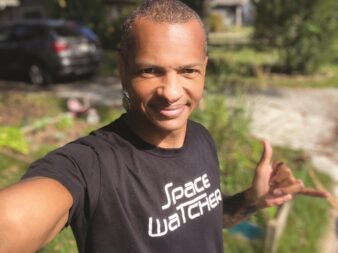
U.S.-based Privateer is the latest startup to announce plans to improve SSA with satellites, although they remain shrouded in secrecy despite coming out of stealth mode in March.
The venture is backed by Apple co-founder Steve Wozniak.
Moriba Jah, Privateer’s chief scientific adviser, said in a Space.com interview published in November that Privateer was looking at gradually deploying several hundred satellites to map objects in orbit.
Jah had developed a visualization tool before he joined Privateer called AstriaGraph that pools SSA data from multiple sources, and has said this platform provides the foundation for Privateer’s efforts.
Privateer unveiled its first product March 1 with a web application based on AstriaGraph called Wayfinder, a visualization tool offered partly for free that combines data from U.S. Space Command and other sources, including data provided directly by satellite operators. Privateer partnered with Swiss watchmaker Omega to launch and promote the tool.
Privateer’s first satellite, a sensor-laden, three-unit cubesat called Pono-1 that will mostly serve as a technology demonstrator, is slated to launch later this year.
Alex Fielding, Privateer’s CEO and co-founder, told SpaceNews in March that the venture is interested in flying future systems as hosted payloads on other satellites rather than building its own constellation. “We really don’t want to create more stuff in space,” he said.
Fielding said Privateer “will be announcing our full constellation plan soon,” in response to a request to comment for this article.
“Currently, our initial focus is on much-needed enhancements to the tracking and knowledge of all space objects to provide an information-oriented mapping of the space environment to ensure safety and sustainability for space providers,” he said.
While the venture does not disclose its customers, he said: “We work with commercial customers and friendly governments alike.”
This article originally appeared in the June 2022 issue of SpaceNews magazine.
